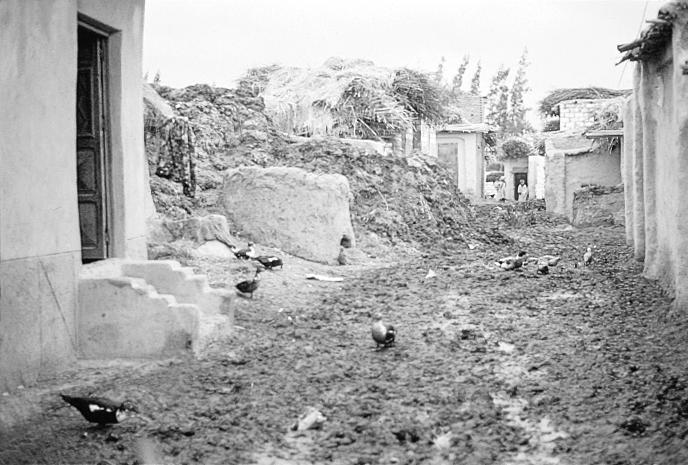Sixth General Assembly
The 6th General Assembly of IAPB was held at the Friendship Hotel, Beijing, People'sRepublic of China, September 5–10, 1999. The meeting was co-sponsored by the World Health Organization, the Japanese National Society for the Prevention of Blindness and the American Academy of Ophthalmology.
There was a warm welcome from our Chinese hosts. Nearly 600 people attended, over 200 from China and 350 delegates from other countries.
This meeting is becoming an important event for all those concerned with eye care throughout the world. Although it occupied five days, the level of interest and high quality of debate was maintained throughout. There is now much more known about the epidemiology of the main blinding diseases and the different methods of control than five years ago at the 5th General Assembly in Berlin. The discussion was therefore more specific and at a high level. There was universal agreement that it was a most valuable meeting.
Officers of IAPB
The President of IAPB for the past 5 years (Dr R Pararajasegaram) and the Secretary (Dr Gullapaulli Rao) are to be congratulated on the excellent organisation of the meeting.
The new President for 1999–2003 is Dr Hannah Faal and the President-Elect is Dr Allen Foster.
Theme
The theme of the congress was the Global Initiative for the Elimination of Avoidable Blindness, entitled ‘Vision 2020’. This Initiative was planned jointly by WHO and the Task Force of IAPB and launched in February 1999 in Geneva. It is set against the current background of over 45 million people blind, a number which is expected to double by 2020 if present trends continue. The purpose of the Initiative is to set common agendas and priorities which will feed into regional and national policy, planning and implementation. The first 5 year phase of the Initiative encompasses:
specific disease control (large-scale cataract surgery; trachoma; onchocerciasis; childhood blindness; and pro-vision of refraction and low-vision services).
human resource development.
strengthening of infrastructure and technology for eye care.
The conference was therefore primarily concerned with how these broad strategies can be translated into focused programmes at the local level, with collaboration between all the partners concerned.

Environmental improvements are vital forthe control of trachoma
Photo: Paul Courtrigh
Some Highlights
Selected emphases which emerged from the presentations and discussions included:
1. Cataract Surgery
Three recent publications from India have highlighted the disappointing visual results from large scale cataract surgery. These were referred to several times. How these outcomes could be improved – by better training, better facilities, and better quality control – emerged as critical issues. The routine monitoring of quality of outcomes needs to be built into the data collection.
2. Trachoma
There is a major initiative, within the overall Vision 2020 framework, to eliminate trachoma as a blinding disease. The main issues are training of enough surgeons to deal with trichiasis; how the new antibiotic azithromycin should be used in mass distribution; and how environmental improvements can be incorporated into the programmes.

Control of blindness from onchocerciasis should be possible by the year 2010
Photos: Ian Murdoch, Allen Foster
3. Onchocerciasis
If the current mass treatment programmes with ivermectin can be sustained, control of blindness from this cause by 2010 should certainly be achievable.
4. Childhood Blindness
It is necessary to continue the elimination any new cases of measles and rubella, and to eradicate vitamin A deficiency. The next priorities are the surgical treatment of childhood cataract and corneal opacity, and screening and management of retinopathy of prematurity. The provision of low vision services was also highlighted.
5. Glaucoma and Diabetic Retinopathy
Whereas trachoma, onchocerciasis and vitamin A deficiency are focal and yield to public health measures, glaucoma, diabetic retinopathy and corneal scarring require ophthalmologists. Although these conditions are not in the global priority list for the first 5 year phase, they are already priorities for those regions of the world where ocular infections and the backlog of cataract have largely been controlled. We need model strategies for case finding and management for each of these conditions, thinking in terms of population units of one million people.
Glaucoma is now thought to be the second cause of global blindness. Speakers emphasised that we do have a good treatment for open angle glaucoma, particularly with the addition of antifibrotic agents to trabeculectomy. Although there are not yet tests for open angle glaucoma which are sufficiently sensitive and specific to detect the early pre-clinical stages, we should be able to identify the established cases which need immediate treatment.
6. Human Resources
We need increased numbers and improved quality of training for all cadres of eye workers. This is an area where national Ophthalmic Societies in industrialised countries may be able to make a contribution. A particular area of need is training in the management of paediatric problems.
7. Infrastructure and Technology
Emphasis was placed on financial sustainability, which has been achieved by some model programmes through cost containment, including the local production of IOLs, sutures, and surgical instruments; income generation using a multi-layered fee structure; and high quality of service delivery.
Conclusion
Although there had been questions before the meeting as to the value of the IAPB General Assemblies, in view of the time and cost involved, it was agreed by everyone present that this had been a most useful meeting and that the next General Assembly should go ahead in 4 years (in addition to 6 regional IAPB meetings in the interval). As well as enjoying many personal contacts, the delegates returned home stimulated by evidence of all that has been accomplished in the past 5 years, and inspired for their work in developing programmes for the prevention of blindness.


